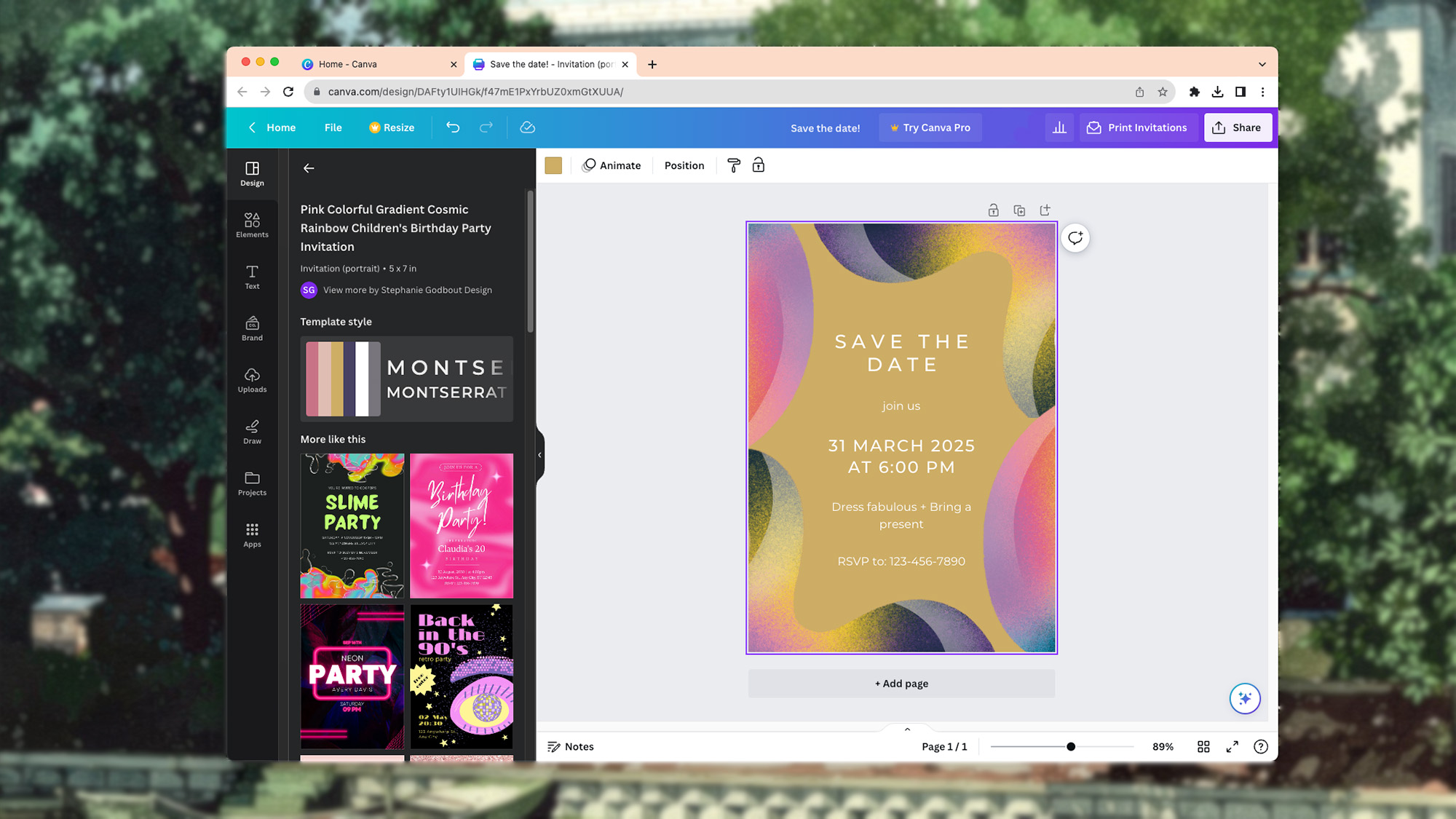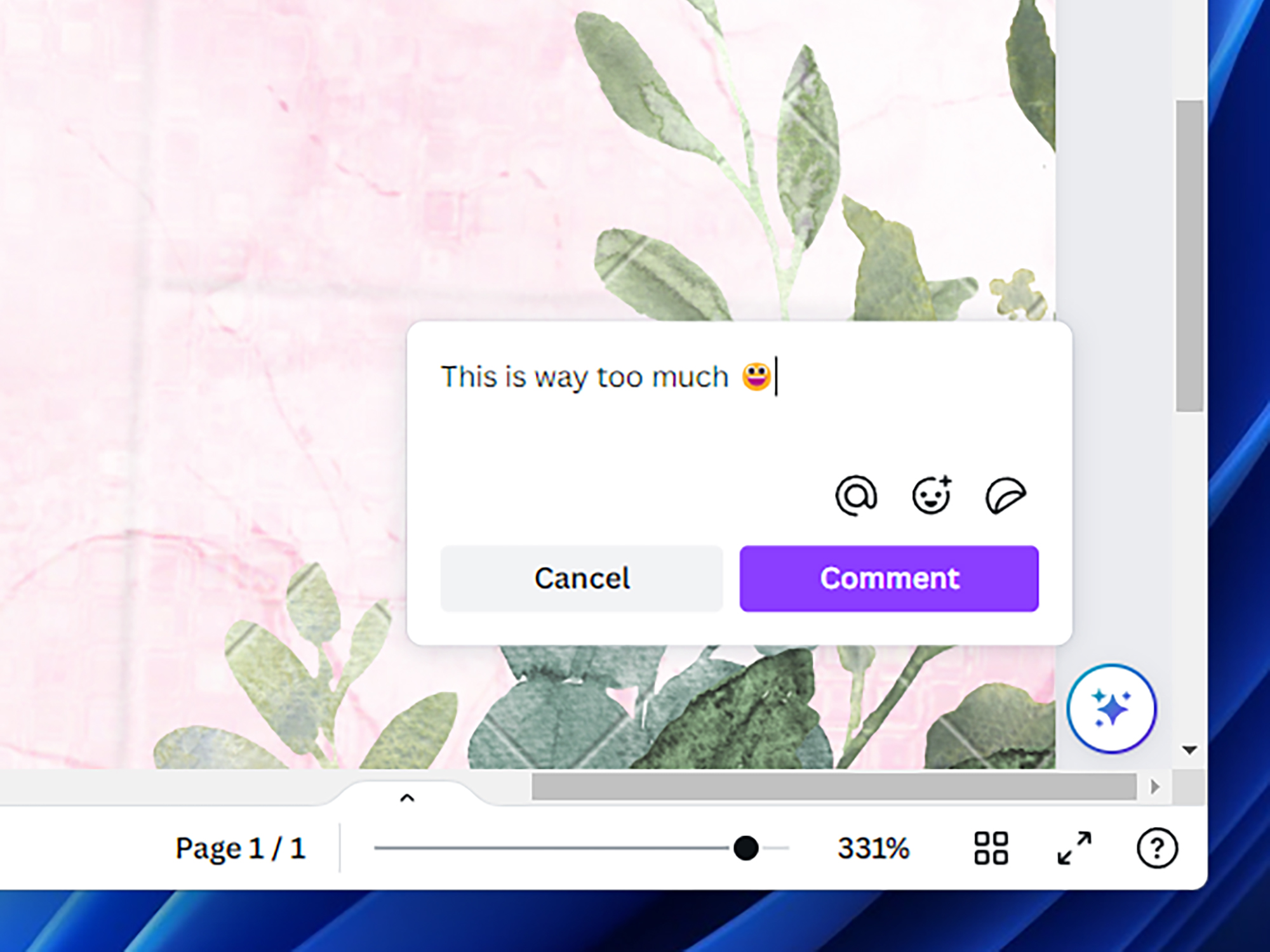

Canva is a graphic design software package available on the web, desktop and mobile, and it can help you make just about anything: from websites, documents, and whiteboards, to presentations, social media posts, posters, and newsletters. You can use the platform for free, but if you pay $15 a month, you’ll have access to more templates and stock content, and more advanced tools.
Whatever you use Canva for, some tips will help you find more to explore. We’ll focus on the web interface, but you can find the same or similar features in the mobile and desktop apps too.
1. Switch the style up
In the toolbar pane on the left, click Design and then Styles to change up the look of your Canva creation: You’ll have a range of color schemes and font sets to pick from, organized into categories like Modern and Professional.
[Related: 5 ways to get started with Freeform, Apple’s app for creative thinkers]
Click on any style to apply it and see how it looks. All of the text and images you’ve put in place won’t change, but this feature is a quick and easy way to freshen up your layout without effort—especially if you’re stuck for inspiration.
2. Animate design elements
If whatever you’re working on is going to be viewed on a screen rather than in physical, printed form, you can take advantage of animations. Select any item or group of items in your design, and click Animate at the top to see your options. Pro subscribers will be able to do more, and get the ability to adjust the speed and direction of the animation.
Choose an animation style to see a preview. When used well, adding animations to your presentation or website can really catch the eye, but be wary of overdoing them.
3. Leave comments for yourself (or others)

Right-click on any element on the page, and choose Comment to attach text to different parts of your design, together with emojis and stickers. It’s a handy way of leaving reminders or notes to yourself.
Canva’s commenting feature is also useful when you’re collaborating with other people or sharing your designs. Everyone with access to the file will be able to access the comments, and you can @ mention other users to get their attention—they’ll get a notification telling them you’ve assigned them a task or have a comment for them they cannot miss.
4. Get everything positioned correctly
Having misaligned design elements can really hurt the visual aesthetic of your Canva creation, but there are tools available to make sure that doesn’t happen. To begin with, you can right-click on any item and choose Align to page to set its location in relation to the digital canvas as a whole.
There’s also a Position button in the toolbar at the top: Click it to set an element’s place down to the exact pixel. If you have multiple items selected (Shift+Click to select one by one or drag over them all using the mouse) you’ll also be able to quickly position them in relation to each other.
5. Pick out a color from anywhere

Select an element in your canvas to pick a color for it—just click the color swatch on the left of the toolbar. You’ll have a wide range of colors to choose from, but if you click the multicolored button with a + (plus) sign on it, you’ll access the color picker tool—it’s the one with a little pipette icon on it.
Use this feature to choose a color from anywhere on the design—you’ll even get a little zoomed-in grid to help you be as precise as possible. In fact, you can pick up a color from anywhere on your computer screen, so you can sample colors from websites or images you’ve got open in other tabs or have saved to your local hard drive without importing them to Canva.
6. Copy styles over
If you’re really happy with a font size and color combo, or the border and tint you gave to an image, Canva lets you automatically copy this style over to other elements too.
[Related: Best presentation software of 2023]
Click the item whose style you want to take, then click the copy style button on the toolbar at the top: It looks like a paint roller. Finish by selecting another item on the page, and Canva will apply the style to it.
7. Apply colors from an image
Sometimes the most difficult part of creating a design is figuring out a combination of colors to use. But to make things easier, Canva lets you use one of your images as a foundation to develop your own color palette.
Just right-click on an image, choose Apply colors to page, and the platform will apply the scheme of the photo to the other items in your design. It’s a really good way of making sure everything looks cohesive and fits together visually.
